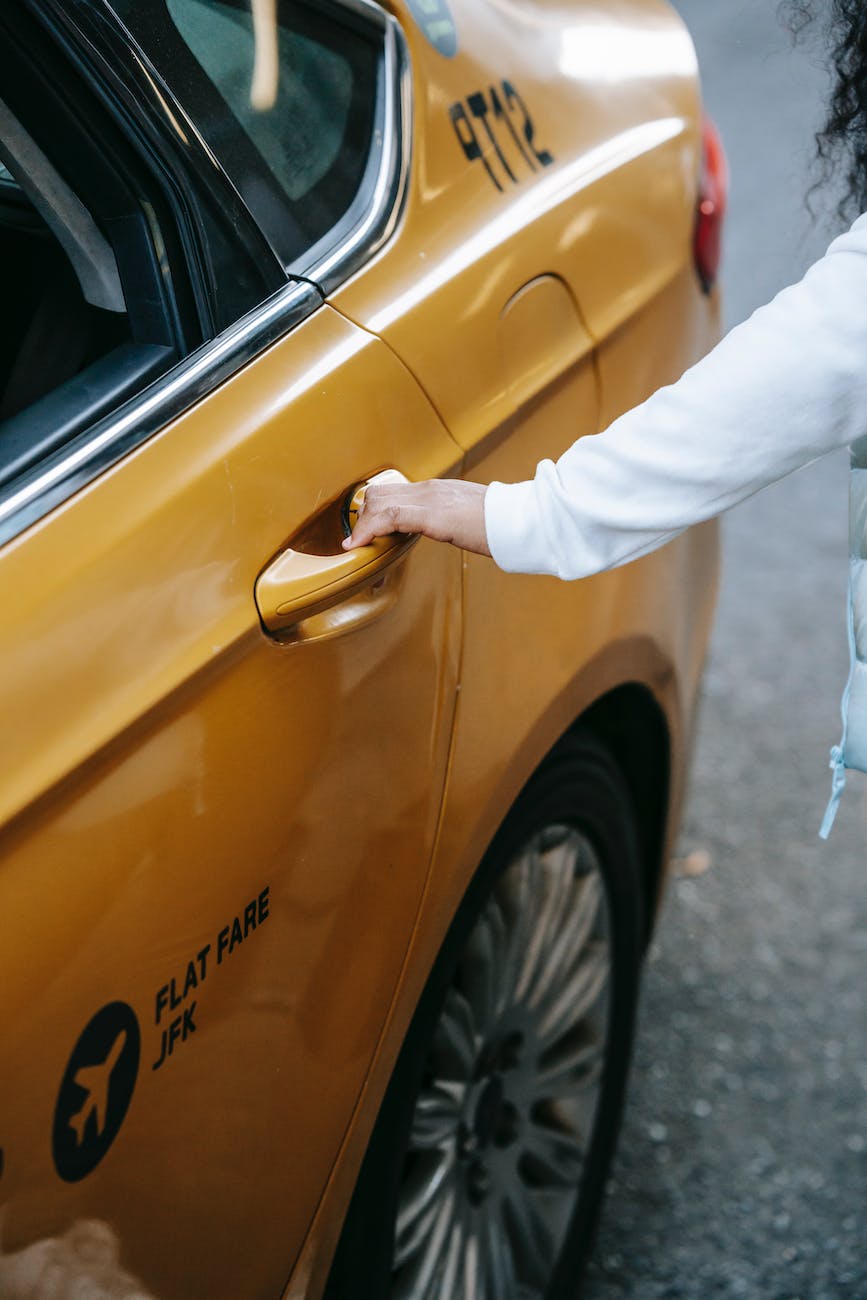Are There More Doors or Wheels in The World ?
Introduction
Have you ever been walking down a street and wondered which is more common in the world: wheels or doors? If so, you aren’t alone. This is a question that has been pondered by many people over the years. Today’s technology provides us with a unique opportunity to answer this age-old question.
By taking a closer look at the things that make up our everyday lives, from cars to phones to buildings, we can get an idea of what is more prevalent in the world today: wheels or doors? We can examine how much time is spent inside versus outside, as well as how much of our daily life revolves around transportation and movement.
In this article, we’ll explore these topics and provide an answer to the big question: Are there more wheels or doors in today’s world? We will discuss the various factors at play and compare them to determine which one dominates today’s landscape. So let’s dive in and find out what exactly is more commonly found on our streets!
What Is the Approximate Ratio of Wheels to Doors in the World?
When it comes to wheels vs. doors, the answer is clear: there are more wheels in the world than doors. Studies show that this ratio is closer to 3:2 with approximately 3 wheels for every 2 doors.
This is especially true in modern-day cities, as cars are outfitted with four wheels and public transportation systems have multiple carts attached to them, often with 2 or more sets of doors and windows for each vehicle.
Wheels are also commonplace in the industrial world, from massive steel rollers used to move industrial machinery to bicycles—which have even become a preferred mode of transportation in many urban areas.
The ratios might differ depending on where you look, however. For example, residential housing generally has more doors than wheels since it has fewer vehicles present than a factory or warehouse would.
Overall though, it’s safe to say that there is a significant majority of wheels over doors in today’s world.
How Have Transportation Options Changed the Ratio of Wheels to Doors?
It’s no secret that transportation options have drastically changed in recent years, and this has had a major impact on the ratio of wheels to doors in the world. From bicycles and cars to busses and planes, people now rely on more wheels than ever before to get around. While doors are still necessary for entry and exit, they are now often far outnumbered by the number of wheels required for movement.
Take vehicles, for example. Almost all vehicles have four wheels – two at the back and two at the front. Then there are other transportation options like roller coasters and ferris wheels, which have even more gears and mechanisms connected by various axles or spindles for support. All these additional wheels contribute to an upsurge in the number of total wheels found worldwide.
At the same time, conventional forms of architecture such as homes, buildings, and businesses still contain plenty of doors for people to enter and exit from. But as technological advancements enable new modes of transportation like self-driving cars or electric scooters, it’s likely that even more wheels will be produced in order to facilitate these new forms of movement – further tipping the scale away from doors and towards wheels as a whole.
What Types of Vehicles Have More Wheels Than Doors?
Given the sheer number of motorized vehicles circulating around the world, it is no surprise that more wheels than doors exist in today’s world. Have you ever thought about what types of vehicles have more wheels than doors?
The answer is: commercial and industrial vehicles. From semi-trucks to large agricultural equipment, these machines carry heavy cargo and require a greater number of wheels to support the additional weight. Some of the most common commercial and industrial vehicles found on roads today include:
- Semi-trucks
- Dump trucks
- Cargo vans
- Delivery trucks
- Utility trucks
- Busses
- Construction equipment
- Farm machinery
- Forestry equipment
Each one of these machines serves an essential purpose in society and are more commonly found with more wheels than doors. So while the age-old debate continues between wheels and doors, it is clear that a larger proportion of the world’s population is using more wheels than doors—especially when it comes to commercial and industrial vehicles.
What Types of Buildings Have More Doors Than Wheels?
When it comes to buildings and structures, doors tend to be more prevalent than wheels. Take a look around your neighborhood – when you look at the buildings, do you see any retaining wheels?
It’s not just esthetically pleasing structures either – many types of buildings that are essential for everyday living have much more doors than wheels. Hospitals, schools, offices and other places of work, apartments, and homes all favor doors over wheels.
The reasons for this preference are manifold:
Doors are easily customizable to fit a building’s desired esthetic. They can come in many shapes and sizes and be made with different materials for increased insulation or safety.
They provide a high level of security against potential intruders. Doors can be locked with high grade locks to increase the building’s safety.
They also provide an effective way of controlling air temperature inside the building by creating a barrier between exterior temperatures and interior temperatures.
Doors also act as an acoustic barrier by reducing sound transfer between two separate spaces in a building.
In short, when it comes to practicality, durability, and esthetics, doors in buildings win out over wheels every time.
What Are Some Common Applications for Both Wheels and Doors?
Wheels and doors can be found in many different environments. While most people think of cars when they think of wheels, wheels can perform much more than simply transporting items quickly from one place to another. On the other hand, door applications range from exterior entryways to indoor room dividers.
WHEELS
Wheels are used in a variety of industries and applications:
Automotive: Cars, bikes, motorcycles, and other forms of transportation
Industrial: Carts, forklifts, conveyor belts and other machinery
Home Goods: Luggage, toys and furniture like rolling office chairs
Medical Equipment: Mobility aids like wheelchairs and walkers
Recreation: Skateboards and rollerblades
DOORS
Doors are found in all sorts of buildings from commercial stores to residential homes. Depending on the purpose of the door, it can open inward or outward towards the space you’re entering or exiting. Here are some common door applications:
Exterior Doors: Front doors to welcome visitors or back doors for private access
Interior Doors: Room separators like closet doors or pocket doors between rooms within homes
Security Gates & Bars: To protect stores or homes from intruders
Both wheels and doors offer a variety of useful uses in homes and businesses throughout the world. They both provide convenience while offering security when needed to keep out unwanted guests.
What Is the Future Outlook for Wheels and Doors Around the World?
When it comes to the future outlook for wheels and doors around the world, it is impossible to say for sure which will be more common.
That being said, there are some trends that suggest that the world is moving towards a greater reliance on wheels rather than doors. For example, many modern cities are moving towards a more mobile lifestyle, with electric scooters and bicycles becoming increasingly popular as an alternative to traditional methods of transportation. In addition, advances in technology such as self-driving cars and robotics are likely to further increase the use of wheels compared to doors.
At the same time, however, the demand for doors is not likely to decrease anytime soon. As urban populations continue to grow and new technologies enable more efficient construction techniques, there is still likely to be an ongoing need for both residential and commercial building projects. Furthermore, while some types of transport may move away from using doors (such as cars), other forms (such as aviation) show no signs of doing so any time soon.
Ultimately, both wheels and doors have their place in today’s world – it is impossible to definitively say whether one is more common than the other.
Conclusion
Wheels and doors are two ubiquitous elements of our everyday lives, but it turns out the world is more wheel-centric than one might expect. When it comes to transportation technology, wheeled vehicles have come to dominate – and that’s just the tip of the iceberg.
We are surrounded by products and technologies with wheels, from shopping carts to escalators, wheelchairs, wheeled luggage, and wheeled robots. Even the furniture in our homes often has wheels, from rolling chairs and couches to wheeled storage units. Smaller wheeled objects, including office chairs and strollers, are all around us as well.
From the smallest items to the largest, our world is increasingly wheel-centric. Wheels, and the number of wheeled objects and technologies, are here to stay.


